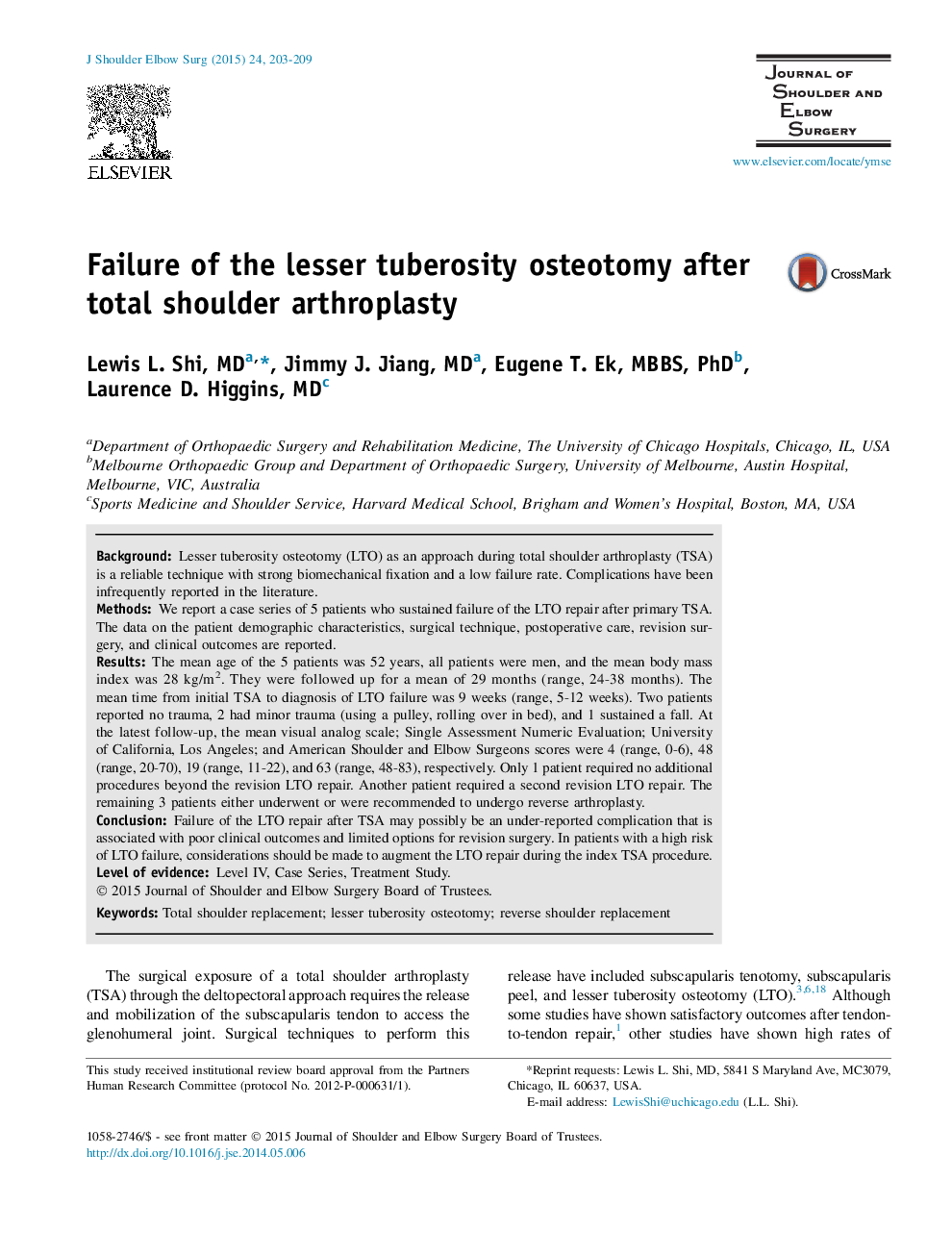| Article ID | Journal | Published Year | Pages | File Type |
|---|---|---|---|---|
| 4073666 | Journal of Shoulder and Elbow Surgery | 2015 | 7 Pages |
BackgroundLesser tuberosity osteotomy (LTO) as an approach during total shoulder arthroplasty (TSA) is a reliable technique with strong biomechanical fixation and a low failure rate. Complications have been infrequently reported in the literature.MethodsWe report a case series of 5 patients who sustained failure of the LTO repair after primary TSA. The data on the patient demographic characteristics, surgical technique, postoperative care, revision surgery, and clinical outcomes are reported.ResultsThe mean age of the 5 patients was 52 years, all patients were men, and the mean body mass index was 28 kg/m2. They were followed up for a mean of 29 months (range, 24-38 months). The mean time from initial TSA to diagnosis of LTO failure was 9 weeks (range, 5-12 weeks). Two patients reported no trauma, 2 had minor trauma (using a pulley, rolling over in bed), and 1 sustained a fall. At the latest follow-up, the mean visual analog scale; Single Assessment Numeric Evaluation; University of California, Los Angeles; and American Shoulder and Elbow Surgeons scores were 4 (range, 0-6), 48 (range, 20-70), 19 (range, 11-22), and 63 (range, 48-83), respectively. Only 1 patient required no additional procedures beyond the revision LTO repair. Another patient required a second revision LTO repair. The remaining 3 patients either underwent or were recommended to undergo reverse arthroplasty.ConclusionFailure of the LTO repair after TSA may possibly be an under-reported complication that is associated with poor clinical outcomes and limited options for revision surgery. In patients with a high risk of LTO failure, considerations should be made to augment the LTO repair during the index TSA procedure.
